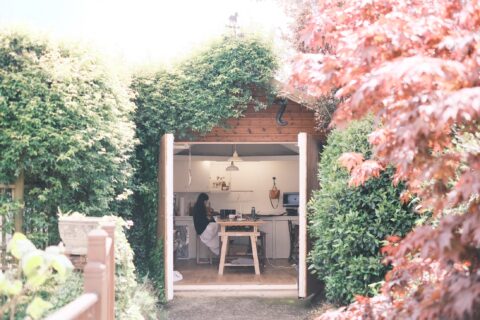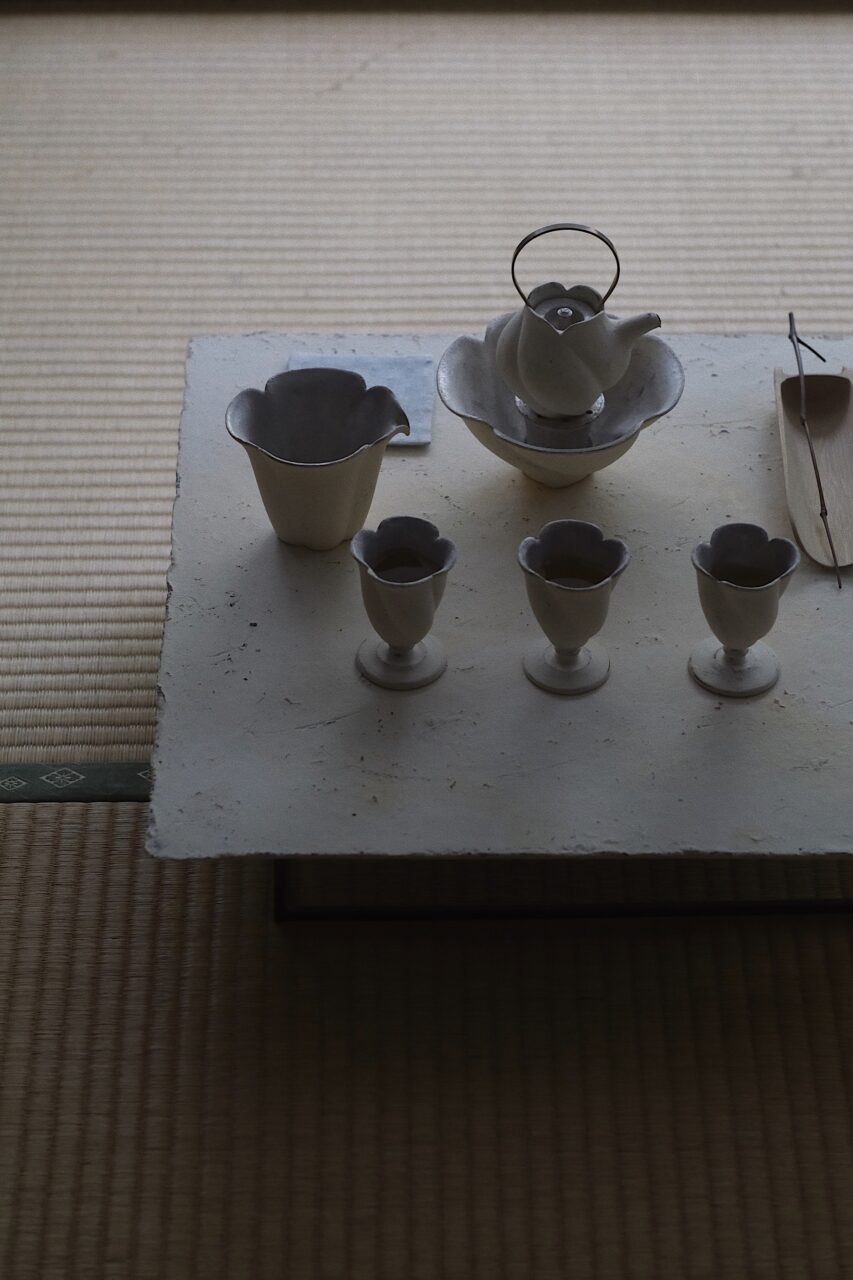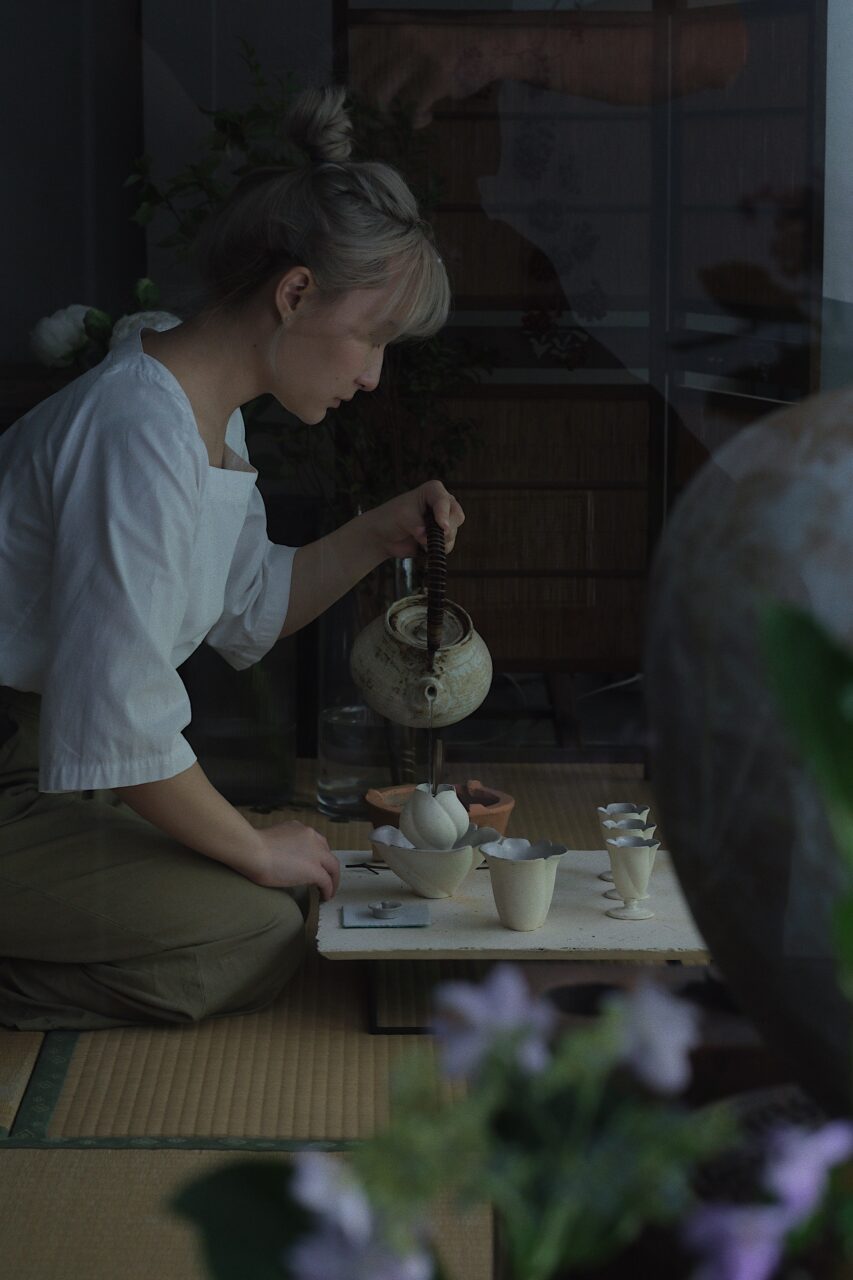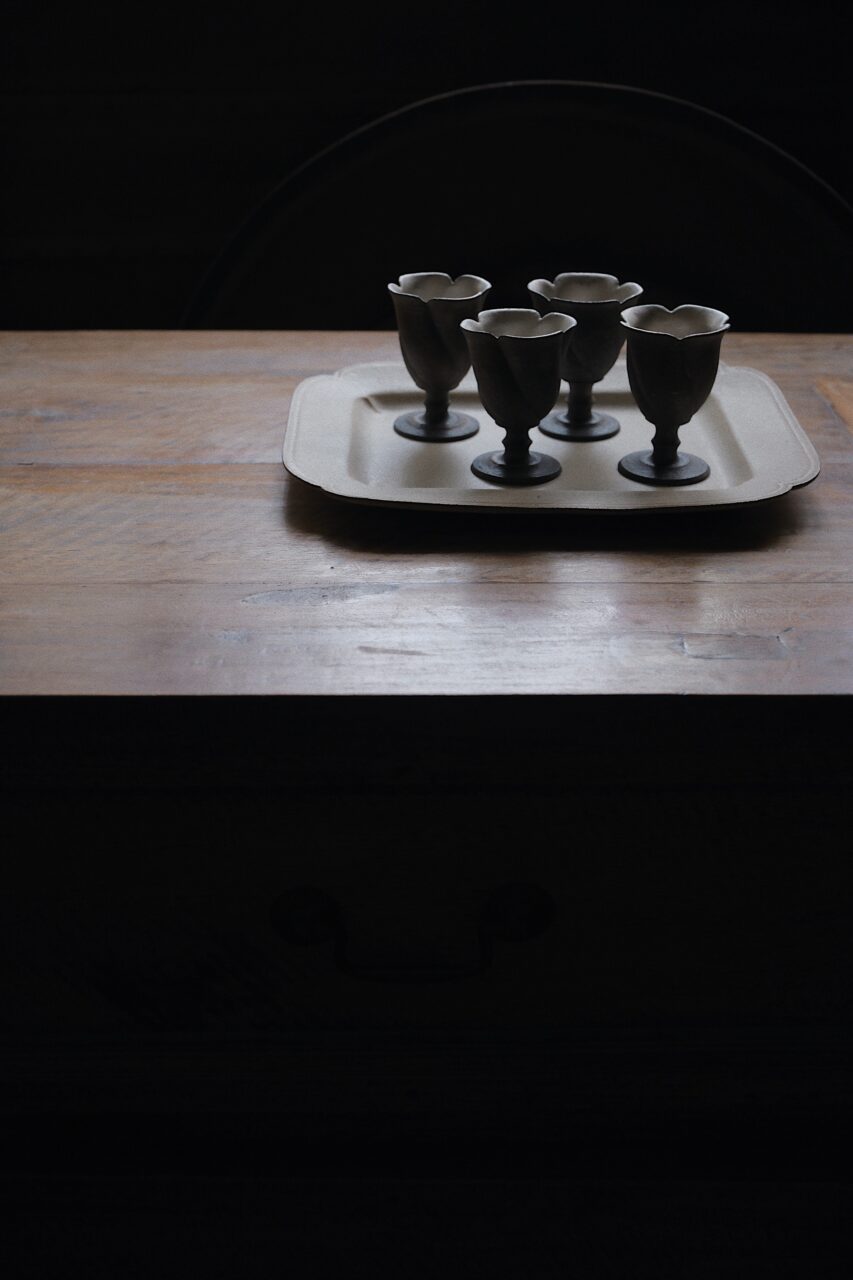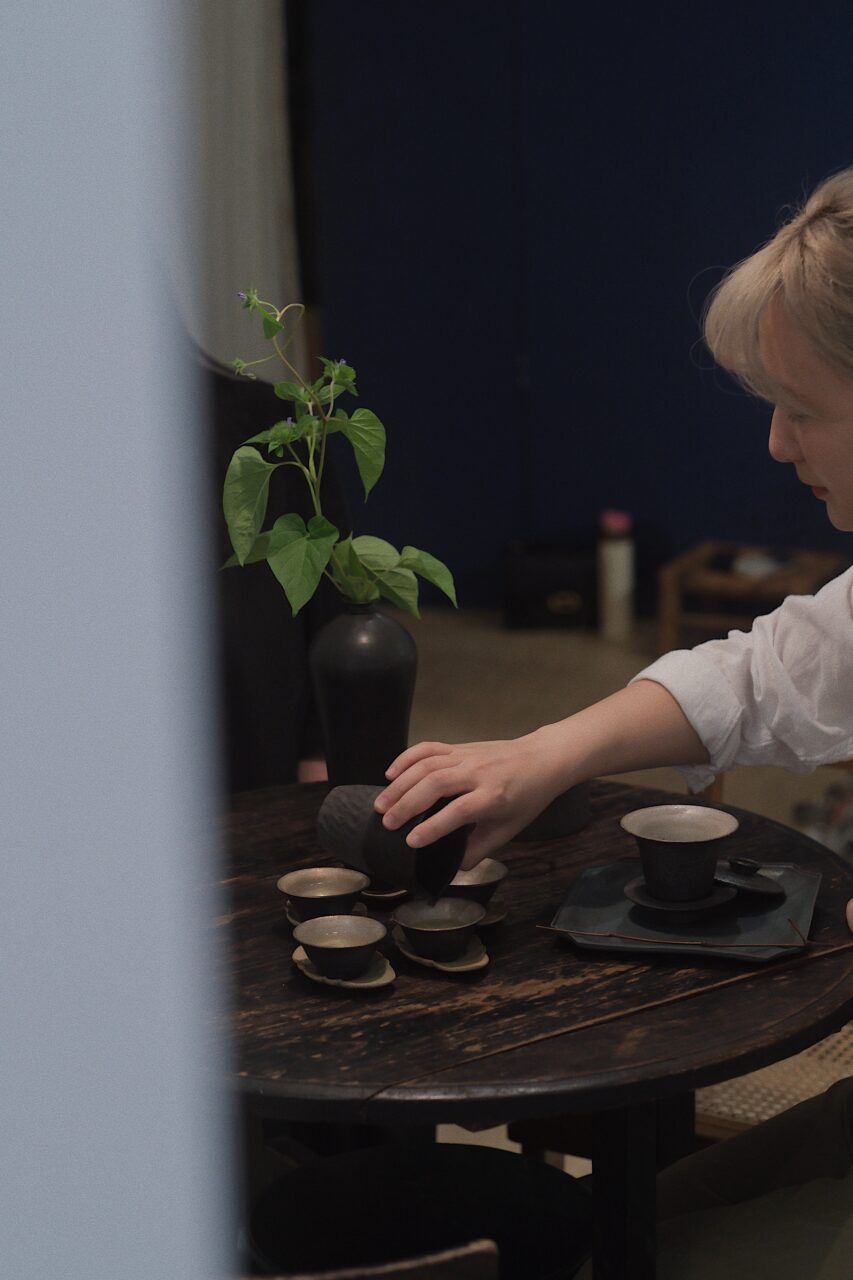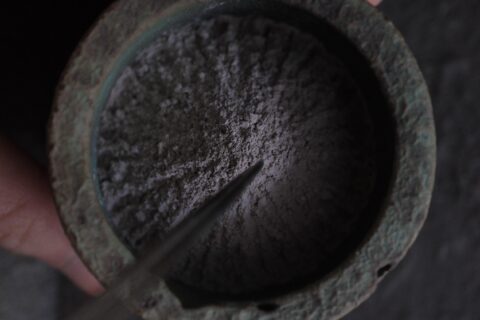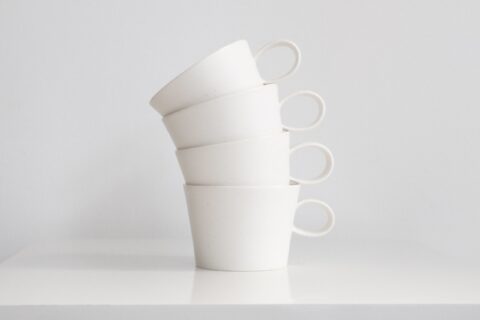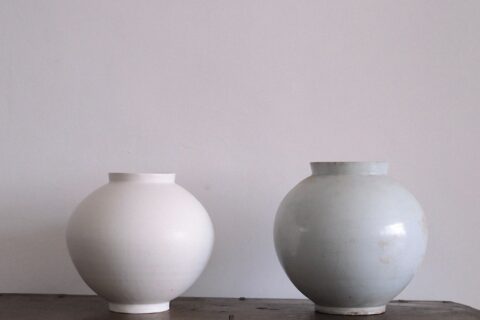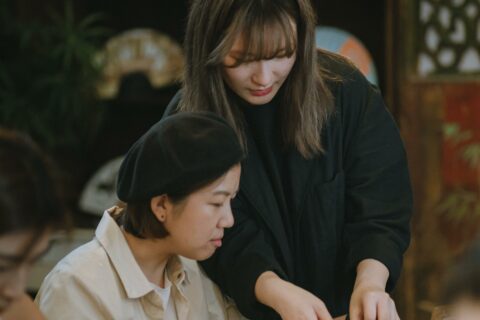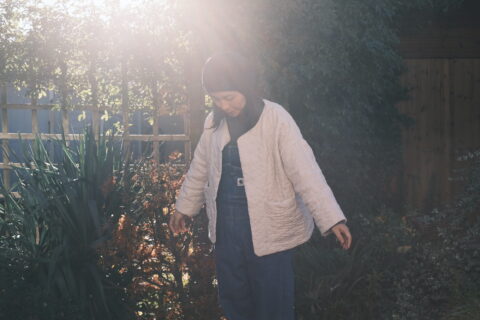陶人與茶
每個學習陶藝的人,一開始都會先學做杯碗碟,相對比較簡單的器物。茶壺,就好像「打大佬」般,屬高難度的挑戰,因為茶壺的結構複雜,由壺身、壺嘴、壺蓋、手把等部件組成,製作的時候,要將它們在指定的時間內一次過完成並且組裝起來;組裝上亦需要取得平衡,兼顧到外在美感、水流力度、人體工學⋯⋯ 再加上一點運氣的加持。可想而知,要成功燒製出一個好的茶壺是多困難的任務,我認為絕對可以透過茶壺看出一個陶藝家的功力和修行。
我們自小到大都喜愛在茶樓飲茶、吃點心,而茶器具是根據我們過去的港式飲茶經驗去創造出來,因此一開始做出來的茶壺是較大的,接近平常在酒樓看見的茶壺大小,茶杯也是較大隻的。
現在回想起,初初開始做茶器的時候,我們其實是不懂得如何講究地喝茶,也不太了解傳統中式茶藝。就像剛學行的小嬰兒一般,嘗試依靠自身的感覺和較為單一的經驗,懵懵懂懂地摸索着。
後來我們在這個過程中越來越意識到自身的不足,直覺對茶的理解還需要更多,於是便開始走上了學習傳統中式茶藝的路。
正式接觸茶藝
學懂了茶最基礎的六大類別,發現到原來不同類型的茶有不同的泡茶技巧。把熱水倒入茶壺中,再把壺中的茶倒進杯中,不就是這樣嗎?
是,也不是。
即使是同一類的茶葉,使用不同的水溫、時間、器具去沖泡,表現出來的色香味也可以截然不同;好像攝影三角的ISO、快門、光圈,需要互相配合,當其中一個元素改變,另外兩邊也需要作調整,才能達到平衡。就是這些細微的改變,就可以影響一泡茶的味道。
茶席上的一步一步 環環相扣
然而,以上所提及的只是沖泡技巧對味道的影響,都已經非常多變了。除了掌握如何泡一壺好茶,了解茶文化的歷史和儀軌也是不可或缺的一環。
從一開始備茶、備水,再到茶席的進行,賞茶、投茶,注水進行溫潤的泡、第一泡、第二泡⋯⋯ 原以為會是枯燥而又千篇一律的步驟,但在我一步一步地進行的過程中,不知不覺間竟讓人高度集中和專注,從而感受到平靜。這種平靜,也許就是傳說中的心流狀態?我也不知道。但這種感覺,讓我聯想起揉泥後坐在拉坯機前,與陶土角力的心情。
泡好茶後,先眼觀茶色,手執起茶杯感受到杯的質感與茶的溫度,鼻子湊近再聞茶香,熱茶順滑地經過杯沿到達唇邊,淺呷一口茶後細細品嘗茶味在舌面上的變化,再經過喉嚨,身體漸漸温暖、冒汗,然後心也慢慢地靜下來⋯⋯
運用身體的五感去感受一杯茶,我深刻地感受到:茶,讓我們在日常生活之中也能欣賞到自然與工藝之美。
在創作中發現自己,滋潤自己
後來我們帶着茶的理解回歸到陶藝創作上,一直思考著一個問題:器物作為載體,最重要的是承載什麼?
現在我們常常會聽到大家強調人與器物的關係,的確,人與器物的關係固之然重要,但其實器物與內容(例如茶和食物)的關係也同樣重要。即使是同一款茶葉,用不同的器物去沖泡或飲用,味道也會不同。
作為一個創作器物的人,我觀察到想造出好的器物不應強調自身的個性,若果想刻意透過這方式來向大眾展示自身的手藝有多出眾,越是想表現自己,越是做不出好器物。言而,這個思維正正和現今藝術市場流行的作品有着強烈的衝突。
但我相信純粹的心永不過時,創作出最合適的舞台,讓器物中的主角釋出最佳之表現,觀眾可以從中享受當下,好的器物自然會誕生!這就是我們的「器物之道」。
貫徹始終地帶着關愛之心去做創作,原以為做好創作只是為了他者,創作之人卻被這過程倒過來滋潤了、成長了,於是也讓我更相信器物作品就是可以陪伴人們生活的「藝術」。
高台杯的創作心得
這次創作的小小高台杯,用來喝茶和清酒都合適。靈感源於高腳酒杯和蛋杯,有次在網絡上意外地看到原來高腳酒杯流行的起源是因為宮廷的中毒事件,當僕人只能手握杯柄而不能觸碰杯身時,就可以大大減低了下毒的可能性。我沒有去證實這段歷史的真偽,只覺得避開觸碰杯身的手勢意外地優雅,非常適合在茶席中使用。二來,我很喜歡人們用蛋杯吃蛋的實用性和不自覺地添加的儀式感 —— 我認為這是在日常生活中,最重要的事。
OBSCURA與梨木製陶所聯乘的高台杯系列已於網上商店上架。
Potters and Tea
When learning pottery, beginners often start by making cups, bowls, and plates, which are relatively easier to handle. However, making a teapot is considered a “boss level” challenge due to its complex structure, which includes the body, spout, lid, handle, and other components. When making a teapot, all of these parts must be completed and assembled within a specified time frame. The assembly process also requires careful attention to balance, taking into account the aesthetic outlook, water flow, ergonomics, and a bit of luck. It is understandable that firing a good teapot is an extremely difficult task, and that is why I believe a potter’s skills and practice can be judged by the quality of their teapot creations.
We love drinking tea and enjoying dim sum in tea houses. Our tea ware is inspired by our experiences of drinking tea in Hong Kong-style tea houses. That’s why our teapots were initially designed to be larger, closer in size to the teapots commonly used in restaurants, and the tea cups were also larger.
Reflecting on when we first began creating tea ware, we must admit that we knew very little about traditional Chinese tea culture and how to truly appreciate tea. We were like newborn babies learning to walk, exploring with our own feelings and limited experiences.
As time went on, we became increasingly aware of our own limitations and recognized the importance of understanding more about tea. We therefore embarked on a journey to learn about traditional Chinese tea culture.
Formal introduction to tea culture
Understanding the six basic categories of tea was just the beginning of our journey to learn about tea. We soon discovered that different types of tea require specific brewing techniques and that making a cup of tea is much more than simply pouring hot water into a teapot and then transferring the tea to a cup.
Even when using the same type of tea, variations in water temperature, steeping time, and tea ware can produce vastly different flavors, aromas, and colors. It’s similar to the process of using a camera, where finding the perfect balance between ISO, shutter speed, and aperture is crucial. Any change in one element requires adjustments in the other two, and even subtle variations can significantly impact the taste of a cup of tea.
Each step of the tea ceremony is interrelated and interconnected
However, the impact of brewing techniques on the taste of tea is just one aspect. Understanding the history and rituals of tea culture is also an essential part of the learning process.
Initially, I thought that the process of preparing tea ware and water, performing the tea service, and conducting various brews would be monotonous and repetitive. However, as the tea ceremony progressed, I found myself becoming highly concentrated and focused, leading to a sense of calmness. I wasn’t certain if this sense of calmness was what is known as the state of flow, but it reminded me of the feeling I experienced when sitting in front of a pottery wheel after kneading and ready to wrestle with the clay.
After brewing the tea, I first observed its color before picking up the teacup to feel its texture and the temperature of the tea inside. I brought my nose closer to inhale the tea’s aroma and then took a sip of the hot liquid, which smoothly flowed over my lips and onto my tongue. I savored the changing taste of the tea on my taste buds and down my throat, feeling my body gradually warming up and starting to sweat, while my mind slowly calmed down.
By engaging all of my five senses to appreciate a cup of tea, I felt a profound sense of how it allows us to appreciate the beauty of nature and craftsmanship in our daily lives.
Discovering and nourishing oneself through creation
With a newfound appreciation for tea, we continued our journey of exploring ceramic art. However, there is one question that constantly weighs on our minds: What should a ware hold inside?
While we often focus on the relationship between humans and objects, it is equally important to acknowledge the connection between wares and the contents they hold, such as tea and food. Even when using the same type of tea, the taste can vary depending on the tea ware used to brew or drink it.
As a creator myself, I have come to realize that good wares and vessels should not be solely focused on showcasing the creator’s personality. The more a creator attempts to highlight their skills, the more their work may suffer. However, I understand that this way of thinking conflicts with the current trend in the art field.
I believe that a pure heart is timeless, and good wares and vessels are created when the maker is dedicated to crafting the most suitable backdrop for the content to showcase its beauty, enabling the user to savor and enjoy the moment. This is, after all, what creating wares is all about.
We have always engaged in our creative endeavors with a caring heart, believing that creating something great was solely for the benefit of others. However, we have come to realize that the creative process also nourishes and helps us grow as creators. I am more convinced than ever that wares are an art form that can accompany people’s lives.
Creating the Goblets
These small goblets are versatile vessels that can be used for serving tea and sake, and they were inspired by the design of wine goblets and egg cups. I recently stumbled upon a story on the internet that claims wine goblets were created in response to a poisoning incident in the palace. According to the story, the risk of poison being added to the wine could be greatly reduced if the servants were only allowed to hold the stem of the glass instead of the bowl. While I cannot vouch for the authenticity of this claim, I find the act of holding the stem of the ware to be surprisingly elegant and fitting for use in tea ceremonies. In addition, I love the practicality of using egg cups and the sense of ritual that they bring along — which I reckon to be the most important thing in daily life.
OBSCURA x TOKI NASHIKI GOBLET collection is now available on our online store.
關於梨木製陶所
陶瓷作為媒介, 創作實用器物。器物創作存在於藝術與設計模糊的界線之間,二人以此作為切入點,重新思考自身對當代陶藝的理解與定義,創作出以生活為本、能經歷時間的器物作品。
About Toki Nashiki
With ceramics as the medium, we create practical ware/utensils. Such creation exists between the blurry line of art and design, where the two of us start to rethink our understanding and definition of contemporary ceramics, thereby creating practical ware that is grounded in daily life and stands the test of time.
